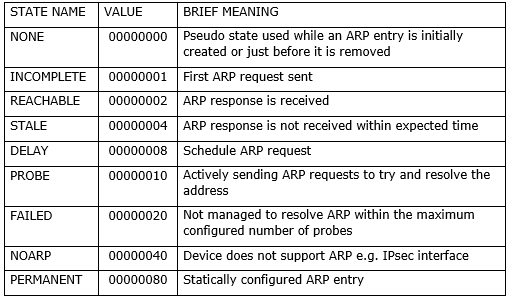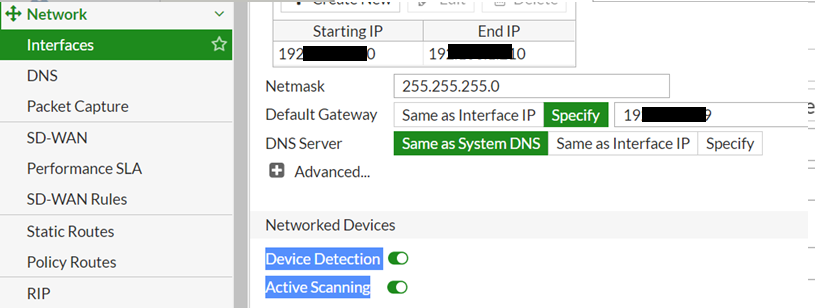
Try "diagnose system waninfo ipify", it will show you the public facing IP address, GeoIP information and if you're on FortiGuard's blacklist. tertiary-server Optionally, enter a third LDAP server name or IP. Create a yaml file in /etc/netplan… Loose Strict. allowaccess : ping https ssh snmp telnet http webservice aggregator Using CLI Console: Ensure SNMP is enabled in Fortigate box by using the below command: What is the default RPF check method on FortiGate? J~ irvannu. If you have an external IP from your provider - I have one way to know it via CLI: Set Name to 192.168.20.0. So, you have to know which IP address to use as an external IP address. Fortinet does a great job with almost every aspect of the Fortigate device. checkpoint_access_layer_facts – Get access layer facts on Check Point over Web Services API. Leave Type as Subnet Set IP/Netmask to 192.168.20.0/24. For more information, refer the Fortinet documentation.

I got here because I was wondering the same thing. By default, all the interfaces of Fortigate are in DHCP mode. configure the port1 IP address and netmask. I am trying to use the following command: but I am getting the following error before 255.255.255.0: I have tried a lot but failed to understand the reason behind this issue. To do this on the Fortigate, you can issue the following command: I want to set IP address on Port1 of Fortinet Fortigate CLI. I configure/support Fortigate firewalls on a daily basis, the baby 60DSL’s, the 200A’s, but mostly the big 3016B’s. Run a packet sniffer to make sure that traffic is hitting the Fortigate. Note : x.x.x.x is the IP address that we want to filter. Brackets, braces, and pipes are used to denote valid permutations of the syntax. In this case, this IP address is a private IP address because Oracle does 1:1 NAT. In the Level field, select the logging level where FortiGate should generate log messages. Fortinet makes it very easy to get this up and going within a few minutes.2. Thats it! VXLAN is an open source protocol that is a great datacenter technology. Internet 192.168.19.51 0 8be ARPA Vlan1 – 19.51 lives behind the 60Eġ 8be DYNAMIC Gi1/0/1 -Fortinet 60D is connected to gig 1/0/1 Protocol Address Age (min) Hardware Addr Type Interface For example the below shows the ARP/MAC of the Cisco 3650 switch at the Datacenter side (60D). You can also check and make sure that the ARP/MAC address tables on each side show something on the remote side. Then a simple ping test between two devices on the same subnet will be enough to make sure things are working. Next lets check out the Firewall Policiesįirst make sure the VPN is up and working. Then lets check out the Firewall Policies Set member “internal1” “internal2” “VXLAN”

In 5.6.2 VLANs tags will pass through the tunnel.In CLI use the commands below to help get broadcasts (be careful) and ARP to go across.Actually I have seen small issues when putting an IP address on the interface. No IP address on the Switch interface is needed.Most Cisco documentation will mention increasing the MTU, but since we are going over the net with this, increasing MTU means lots of fragmentation. The VXLAN encapsulation adds around 50-bytes. Lowering the MTU of the VXLAN/internal interface might be a good idea.Add both the local network, and VXLAN-VPN interface to this switch.remote-gw is the peer address of the other side.encap-remote-gw4 is the peer address of the other side.Local encap-local-gw4 is the public address on the local FW.Here is a check lists of things that are needed: Encapsulation only happens at Fortigate firewalls. The red line indicates the VXLAN encapsulation path. Fortinet has some great documentation as well on this feature (Links below).īelow shows our simple layout. Below is the scenario and config of the Fortigates as well as show ARP/MAC from the Cisco switch. in the last case it was to two different data centers.


Both were situations where we had to have layer 2 stretched for a certain purpose. So far I have set this up for two different clients. For example, vlan trunking works well now. Something to take note of – as of FortiOS 5.6.2 – lots of improvements and enhancements to VXLAN encapsulation have been made. This is a great technology that can help connect to sites at layer2 over layer3. In later FortiOS 5.4 firmwares VXLAN (Virtual Extensible LAN) encapsulation was added. This basically means the layer2 packet gets a VXLAN header applied, then that frame gets encapsulated into a UDP IP packet and sent over to the layer3 network. VXLAN uses MAC Address-in-User Datagram Protocol (MAC-in-UDP) encapsulation to provide a means to extend Layer 2 segments across a layer3 segment. VXLAN is a Layer2 overlay scheme over a Layer 3 network.


 0 kommentar(er)
0 kommentar(er)
